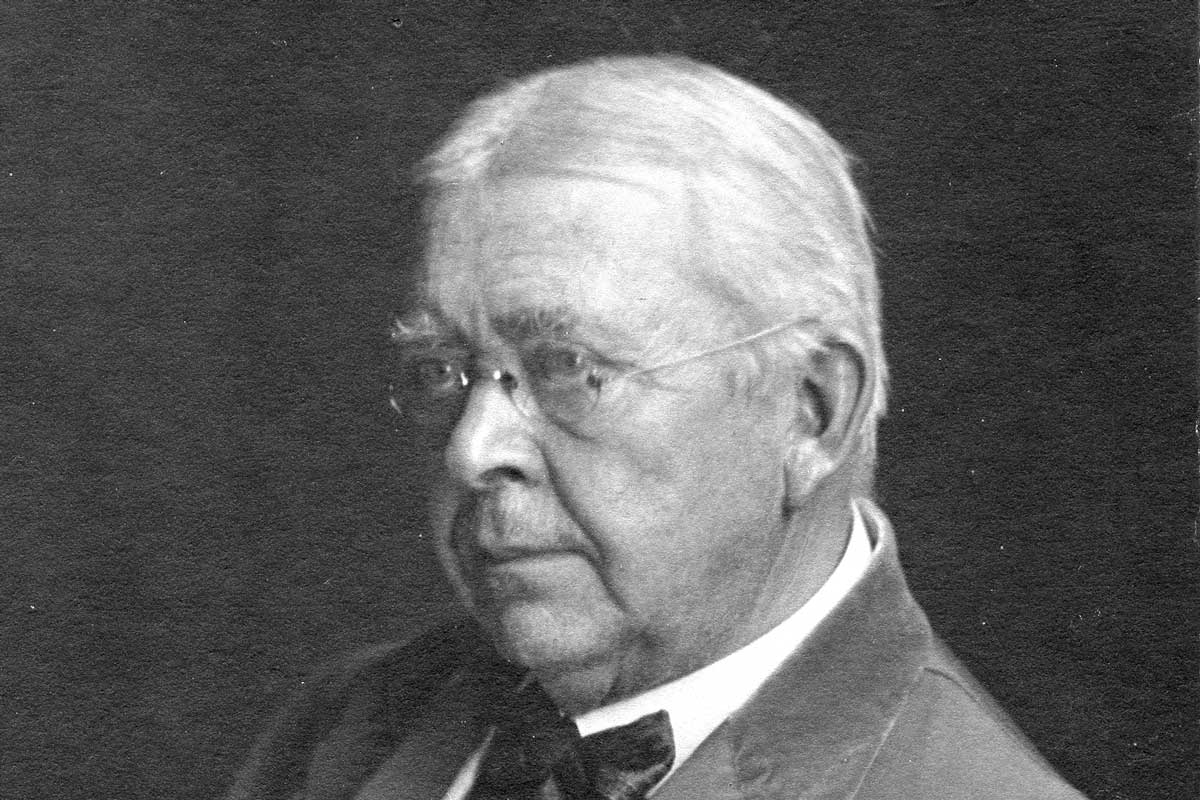Stephen Arnold Douglas Volk (23 February 1856 – 7 February 1935) was an American portrait and figure painter, muralist, and educator. He taught at the Cooper Union, the Art Students League of New York, and was one of the founders of the Minneapolis School of Fine Arts. He and his wife Marion established Hewnoaks together.
He began studying art in Rome, and attended the Ėcole des Beaux Arts in Paris (1873 to 1879), where he was a pupil of Jean-Léon Gérôme. At age nineteen, he exhibited at the Paris Salon of 1875.
He returned to the United States, and was hired as an instructor at the Cooper Union in New York City, where he taught from 1879 to 1884 and from 1906 to 1912. He helped to found the Minneapolis School of Fine Arts in 1886, and served as its director until 1893. He taught at the Art Students League of New York (1893 to 1898), the National Academy of Design (1910 to 1917), and intermittently at the Society for Ethical Culture.
He was also a working artist, noted for his figure and portrait paintings. He exhibited three works at the 1893 World’s Columbian Exposition in Chicago, where the group won a medal, his first major award. One of the three, a “story picture” titled “The Puritan Maiden,” featured a young woman huddled against a tree in a bleak winter landscape. The footprints in the snow of her (unseen) lover lead away into the distance – “The snows must melt, the trees bud and roses bloom, ere he will come again.” It had been painted twelve years earlier, but became enormously popular at the Exposition and later through engraved copies.
Family members posed as models for a number of his most famous paintings. Puritan Mother and Child (1897), featured his wife in historical costume embracing their youngest son, and was part of the group that won a gold medal at the 1915 Panama-Pacific Exposition in San Francisco. It is now in the collection of the Carnegie Museum of Art in Pittsburgh. The Young Pioneer (1899), a full-length portrait of his son Gerome in rustic costume holding a canoe paddle, won first prize at the 1899 Colonial Exhibition in Boston. It was bought for the Metropolitan Museum of Art in 1906,[7] but later deaccessioned. The Boy with the Arrow (1903), which featured his son seated on a rock with Kezar Lake in the distance, won the 1903 Carnegie Prize from the Society of American Artists, a silver medal at the 1904 Louisiana Purchase Exposition in St. Louis, and the 1907 gold medal at the Carolina Art Association. It is now in the collection of the Smithsonian American Art Museum.
Critic Charles H. Caffin found Volk’s historicist work formulaic but sincere:
Generally, he paints a bit of the pine forest, rude and solemn, and places in it a girl or boy; with such differences of motive as are suggested by the titles “Song of the Pines,” “Thoughts of Youth,” “The Woodland Maid.” The figures are types of healthful beauty, with earnest faces and large eyes peering into the beyond. The spirit of the nation’s past and of its best hopes for the future seem to be figured in these types. The sober dignity of the color schemes, warm browns, rich woodland greens and glimpses of brilliant blue, enforce the serene impressiveness of these pictures. One realizes that they are the outcome of a sincere and purposeful mind.
He was one of eight American artists commissioned by the National Art Committee to depict major figures from the Great War (World War I). His three portraits – King Albert I of Belgium (1919), standing in uniform on a battlefield; British Prime Minister David Lloyd George (1919–20), seated at his desk; General John J. Pershing (1920–21), standing in uniform with his horse’s reins in his hand – were donated to the National Portrait Gallery. The first two were later transferred to the Smithsonian American Art Museum. An abandoned version of Volk’s Pershing portrait showed the general standing beside the grave of an unknown soldier.
Volk was elected to the Society of American Artists in 1880. He was elected an associate of the National Academy of Design in 1898, and became a full academician in 1899. The two organizations merged in 1906, and he served on the Academy’s council from 1916 to 1919, and as its recording secretary from 1920 to 1926. He was a member of the Architectural League of New York, the National Society of Portrait Painters, and the Society of Mural Painters.[4]
- 1875 – Exhibited at Paris Salon – In Brittany.
- 1876 – Exhibited at Centennial Exposition, Philadelphia – In Brittany, Vanity.
- 1878 – Exhibited at Paris Salon – Portrait of Miss T.
- 1889 – Exhibited at Exposition Universelle, Paris – The Puritan Captives, After the Reception.
- 1893 – Medal, World’s Columbian Exposition, Chicago – Group: Mending the Canoe, The Puritan Maiden, Portrait of Mrs. Lowry.
- 1899 – Shaw Prize, Society of American Artists, New York City – The Woodland Maid.
- 1899 – 1st prize, Colonial Exhibition, Boston – A Colonial Youth (The Young Pioneer).
- 1901 – Silver medal, Pan-American Exposition, Buffalo – Group: The Woodland Maid, Song of the Pines, The Maiden’s Reverie, Thoughts of Youth.
- 1903 – Carnegie Prize, Society of American Artists, New York City – The Boy with the Arrow.
- 1904 – Silver medal, Louisiana Purchase Exposition, St. Louis – The Leetle Canadienne (The Boy with the Arrow).
- 1907 – Gold medal, Carolina Art Association, Charleston – The Boy with the Arrow.
- 1910 – Proctor Portrait Prize, National Academy of Design, New York City – Marion of Hewnoaks.
- 1910 – Saltus Gold Medal, National Academy of Design, New York City – The Little Sister (Little Marion).
- 1915 – Isaac N. Maynard Prize, National Academy of Design, New York City – Dr. Felix Adler.
- 1915 – Gold medal, Panama-Pacific Exposition, San Francisco – Group: Marion of Hewnoaks, Maid of the Manor, Mother and Child.
- 1915 – Gold medal, National Arts Club, New York City – Among the Lilies.
- 1916 – Beck Gold Medal, Pennsylvania Academy of the Fine Arts, Philadelphia – Dr. Felix Adler.
- 1921 – Cross of the Order of Leopold II. Presented by King Albert I of Belgium.
Source: Wikipedia




